Creating an MVP is the best way to test new ideas and unchartered waters without risking the development of the full product first. And this is exactly where MVP testing comes into play.
MVP testing can help you answer critical questions about the validity of your business idea and can ultimately make or break your product’s success.
Key Findings
🔥A minimum viable product is the stripped-down version of a product with very basic functionality.
✅You can conduct MVP testing with UXtweak for free
🤩MVP testing is a great way to get feedback about your product to ensure market fit and reduce the risk of failing
💡There are various research methodologies you can use for MVP testing
🌟By knowing common MVP testing mistakes and avoiding them you can ensure a smooth testing process
What is an MVP?

But let’s start from the beginning… Before delving into MVP testing, it is crucial to define what an MVP is. An MVP, which is the abbreviation for a minimum viable product, is the stripped-down version of a product with very basic functionality.
Nonetheless, it is meant to solve a problem that a user might be facing. MVP testing refers to the process of gathering user feedback and evaluating the viability of this minimum viable product in the market.
Why should you do MVP testing?
MVP testing is one of the most critical steps in the product development process, but is, however, oftentimes neglected. MVP testing is a great way to get feedback about your product to ensure market fit and reduce the risk of failing.
Check out some of the key advantages that it offers:
Ensure product-market fit
MVP testing is an invaluable opportunity to validate (or not!) assumptions that you have been making about user needs and gauge the market demand for your product.
By receiving user feedback at this stage of the process, you get a unique chance to refine your product so that it meets the needs and expectations of your intended users better. In this way, you can increase the likelihood of reaching the product-market fit state.
Minimize costs and time-to-market
Conducting MVP testing early on allows you to identify issues in time and adjust the product or concept without having to invest in full-scale development.
On top of that, this iterative approach can help you to make decisions and implement changes quickly, which means that you have the opportunity to significantly reduce the time-to-market period.
Enhance user experience
Like every other type of user testing, MVP testing can help you uncover invaluable user insights, but also challenges and pain points. By addressing them, as well as incorporating user feedback early in the process, you can enhance the overall user experience.
By rigorously testing and continuously iterating your MVP, you can ensure that your product is aligned with user needs and effectively solves their problems.
How to test an MVP?

There is a host of different ways to get started on your MVP testing. From customer interviews to prototype usability testing and everything in between, we have collated the key MVP testing methodologies here:
1. Customer interviews
One tried and tested MVP testing methodology is the conducting of customer interviews in order to gather in-depth user insights. By conducting in-depth interviews, you will be able to pinpoint user needs, pain points, as well as expectations.
Whether you are choosing to conduct structured or semi-structured interviews, always make sure to include open-ended questions in your discussion guides. For example, instead of asking ‘Did you like the product?’, you can ask them to tell you more about what they thought about their experience with the product.
2. Prototype Usability Testing
Another great methodology to deploy when it comes to MVP testing is conducting prototype usability testing. This methodology will give you invaluable insights into the usability of your product, an element that can make or break your product. Prototype usability testing allows for early identification of usability issues and areas for improvement.
3. Landing pages
Creating a landing page for your MVP is another smart avenue you can take to gauge the appeal of your MVP. Simply create a landing page that underlines the key benefits and features of your offering and start tracking engagement.
A bonus tip is to add a feedback widget with a quick online survey to get more in-depth insights and user feedback.
4. Explainer video
Creating an explainer video for your product by including the key highlights and benefits of your MVP is another effective way of gathering feedback. How? Simply analyze user feedback, reactions, or even questions which the users might express and enhance your MVP by addressing them.
5. A/B tests
A/B testing is another go-to methodology that you should definitely consider when you are conducting MVP testing. This approach involves the comparison of two or more variations of your MVP to determine the version that performs best.
This can be decided upon agreed relevant metrics, such as conversion rates, error rates, or time-on-task. This particular methodology allows for data-driven enhancements. Here is a sneak peek of what A/B testing on a prototype can look like!
6. Wizard of OZ
According to the Nielsen Norman Group, the Wizard of Oz approach ‘is a type of user-research method that involves interaction with a mock interface controlled by a human. It is used to test costly concepts inexpensively and to narrow down the problem space.’
Wizard of Oz testing is conducted by simulating some features of the MVP while users interact with it. This methodology allows for instant feedback through real-time user reactions and assesses desirability before going into full-scale development.
7. Concierge MVP
The concierge MVP approach is another smart way to gauge user reactions before investing in a fully-automated solution. This approach involves providing a more hands-on, personalized service, as well as gathering user feedback on the feasibility and desirability of your service.
For instance, let’s assume that a startup wants to build an app that connects users with career coaches for career advice. Instead of developing a sophisticated mobile app, they can begin with a concierge MVP approach by manually matching users with career coaches based on their preferences.
This way, the startup delivers the core value proposition without going into full-development mode. This is an excellent way to validate assumptions about the market fit of your product.
What are common MVP testing mistakes to avoid?

If you worry about getting your MVP testing wrong, we’ve got you covered. Here is a comprehensive list of common pitfalls to avoid and ensure fruitful testing processes and results:
Failing to define clear testing objectives
Failing to define clear testing objectives is the number one common pitfall to avoid. Defining clear goals and objectives for your MVP testing is quintessential before engaging in it.
Having clear, measurable goals will help you to keep on track and gather only relevant and useful data based on which you can then make informed decisions for the future of your product.
Testing too late in the development process
Another common pitfall when it comes to MVP testing is not testing early enough in the development process. Knowing when to start testing is another critical parameter that you should get right to ensure fruitful testing sessions.
As a rule of thumb, you should aim to test as early as possible in the product life cycle. Testing early can save you from missed opportunities and expensive reworks.
Testing with the wrong audience
Recruiting participants can be hard at times, especially when you have tight timelines to meet. However tempting it might appear, you should not discount on recruiting the right participants for your testing.
Testing with the wrong target audience can have a boomerang effect on your MVP because it can give you misleading and inaccurate insights.
Collecting only qualitative data
An old quote says that you cannot improve what you cannot measure. In addition to this, another common pitfall when it comes to testing is failing to collect both qualitative and quantitative data.
Collecting both types of data will allow for a rounded understanding of the user experience and its flaws. Combining and triangulating data and insights is your best bet to achieve this.
Being biased
Another common trap to avoid when it comes to MVP testing is bias. This is especially important when it comes to start-ups, since founders and other key stakeholders might be heavily involved in the development and testing process.
Always ensure that your test is as neutral as possible without relying on assumptions or subjective opinions.
Not acting on the user insights
Doing all the hard work of uncovering useful insights without actually acting on them is surprisingly another common pitfall that you need to avoid at all costs. This can take the form of ignoring negative feedback or failing to keep track of the feedback. The ultimate goal of MVP testing is to pinpoint areas of improvement and course-correct your product development. Failing to do so will only result in missed opportunities.
In a nutshell
MVP testing is a critical stage of product development that can make or break the success of your product. By following our best practices, you can avoid the common pitfalls and ultimately unlock the potential of your MVP by ensuring market fit, minimizing development costs, and ensuring a stellar user experience.
Make the most of your MVP testing journey by leveraging the powerful tools offered by UXtweak.
From conducting user interviews to creating landing pages and prototype testing, you can use UXtweak every step of the way to gather valuable user feedback and improve your MVP.
Register for your UXtweak account today and unleash the full potential of your product!








